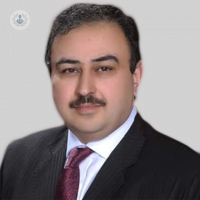Achilles tendon surgery: What you need to know
Written in association with:Achilles tendon surgery is a procedure performed to repair or reconstruct the Achilles tendon, the strongest tendon in the body. Located at the back of the ankle, it connects the calf muscles to the heel bone and plays a crucial role in walking, running, and jumping. Here, leading consultant orthopaedic surgeon, Mr Turab Syed, tells all us all we need to know regarding the procedure.

When is Achilles tendon surgery recommended?
Achilles tendon surgery is usually recommended when the tendon is severely torn or ruptured, or when non-surgical treatments for tendonitis have failed to alleviate pain and improve mobility.
A rupture of the Achilles tendon often occurs due to a sudden, forceful movement, such as during sports activities or a misstep. Patients typically experience sharp pain in the back of the ankle and an inability to push off the ground with their foot.
If the tear is significant, surgery is often required to restore normal function. Surgery for tendonitis, on the other hand, might involve removing damaged tissue or lengthening the tendon to reduce tension.
Types of Achilles tendon surgery
There are two main types of Achilles tendon surgery: open surgery and minimally invasive surgery. Open surgery involves a larger incision to directly access the tendon, while minimally invasive techniques use smaller incisions, reducing the risk of complications like infection and scarring. The type of surgery recommended depends on the severity of the injury, the patient's overall health, and the surgeon's expertise.
Recovery
Recovery from Achilles tendon surgery can take several months. Patients typically wear a cast or boot for about six to eight weeks to protect the tendon as it heals, followed by physical therapy to regain strength and flexibility. Full recovery, including a return to sports or high-impact activities, may take up to six months or longer.
While Achilles tendon surgery is generally effective, it's important to follow post-operative care instructions to minimize the risk of complications and ensure a successful recovery.


